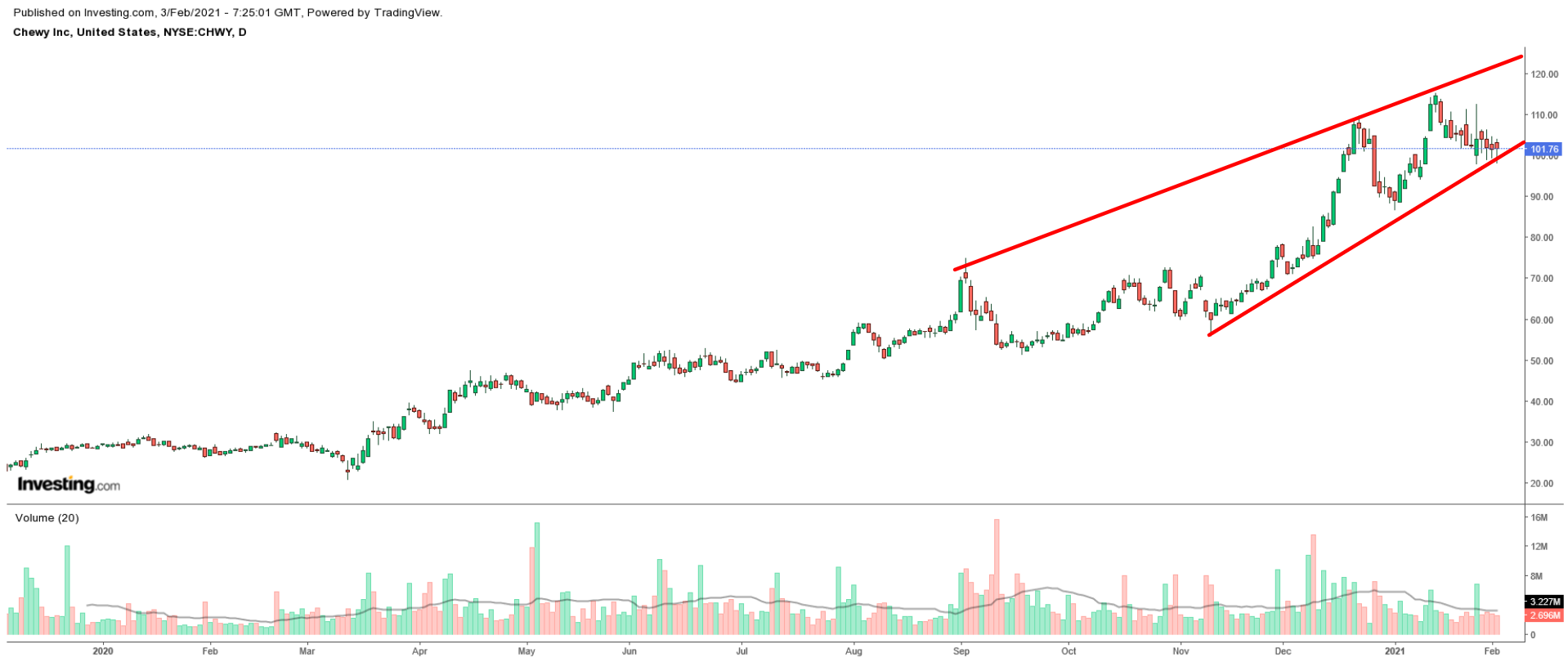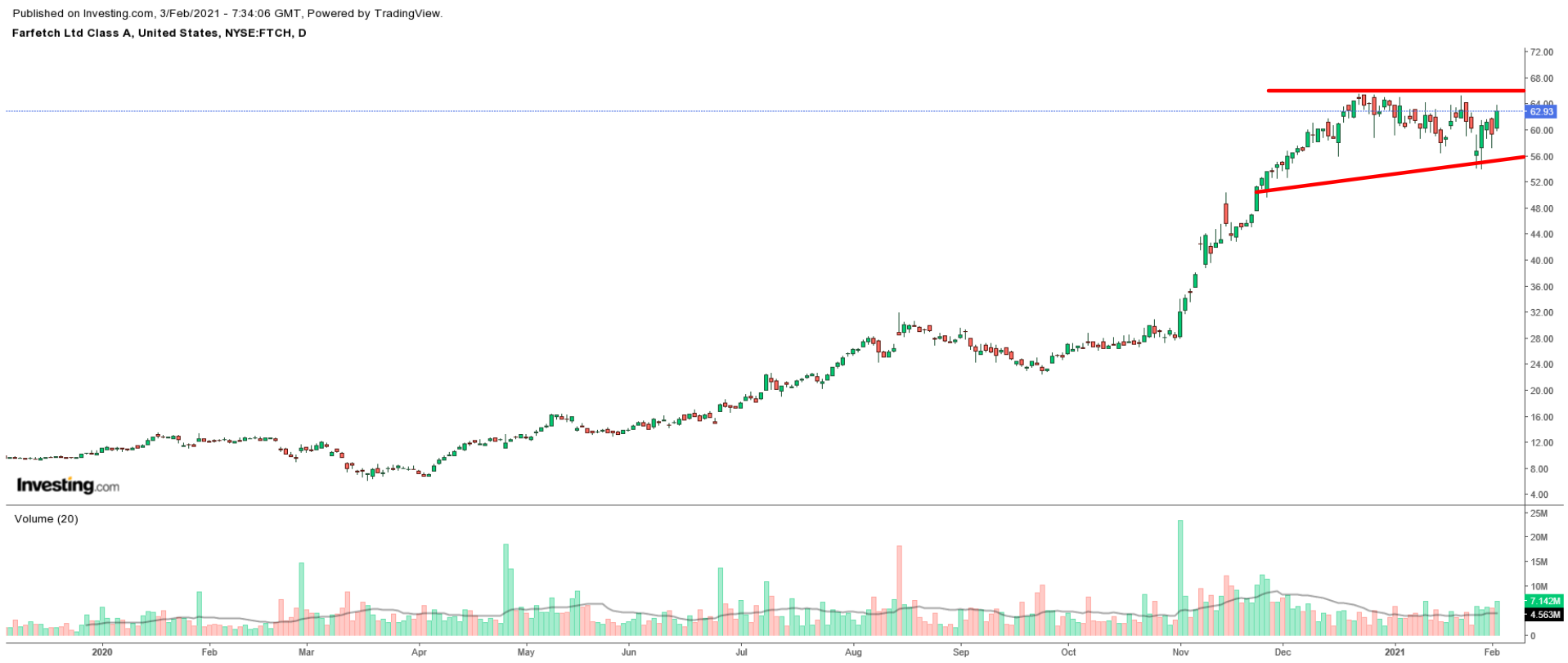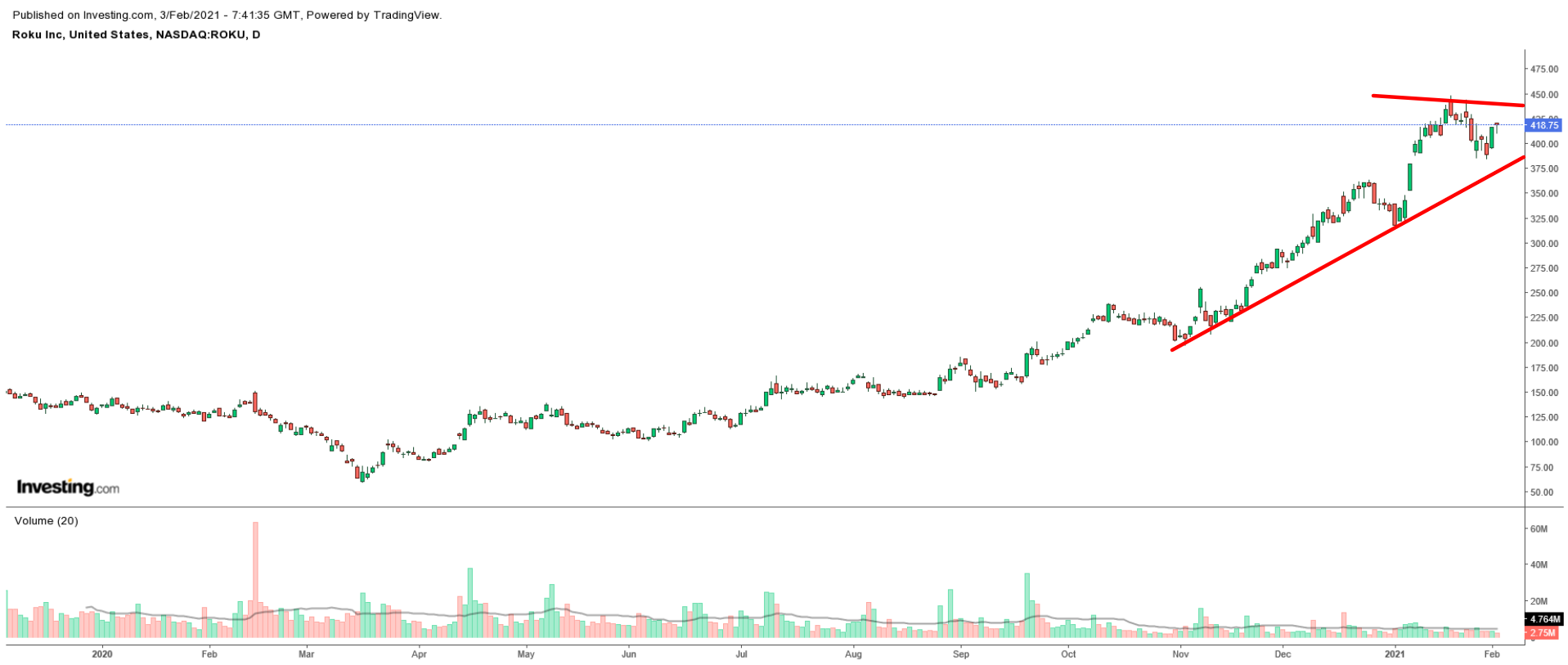The ongoing rally on Wall Street, which has seen the major indices reach a series of new all-time highs, has been driven in large part by young, first-time investors using free trading apps such as Robinhood.
When you consider that Millennials, combined with younger Gen Z counterparts, make up more than 50% of the U.S. population, this new group of retail investors is a force to be reckoned with.
As such, here are three innovative stocks that Millennial and Gen Z investors can’t get enough of. All three have the potential to disrupt their respective industries in the years to come, making them solid long-term picks.
1. Chewy: Largest U.S. Online Pet Products Retailer
Chewy (NYSE:CHWY) appeals to young investors for two reasons: they love to shop online and they love their pets.
The company, which held its initial public offering in June 2019, has seen its shares jump nearly 290% in the last 12 months, as a surge in pet ownership amid coronavirus lockdowns translated into higher demand for pet products.
According to the American Pet Products Association, 67% of U.S. households currently own some type of pet. Digging deeper, from a generational perspective, Millennials and Gen Z now combine to make up the largest segment of pet owners, with that trend only likely to continue to grow in the years to come.
CHWY stock, which reached an all-time high of $115.23 on Jan. 15, ended at $101.76 on Tuesday, earning the Dania Beach, Florida-based pet e-commerce company a valuation of $42.8 billion.
 CHWY Daily
CHWY Daily
In a sign of how well Chewy’s business has performed over the past year, it has turned in earnings reports that beat sales estimates in each quarter of 2020.
The pet products retailer, which offers customers a wide variety of pet food for different animals through its website and mobile applications and provides shipment right to their door, should continue to perform well in the months ahead, given the expected jump in U.S. pet spending.
Chewy next reports earnings on Tuesday, Mar. 9, after U.S. markets close.
Consensus calls for a loss of 10 cents per share for the fourth quarter, narrowing from a loss per share of 15 cents in the year-ago period. Revenue meanwhile is forecast to increase about 45% year-over-year to $1.95 billion, thanks to growing demand for its Autoship service. Autoship allows customers to save money by placing a recurring product order. It also provides the company with a future revenue stream.
Beyond the top- and bottom-line figures, investors will keep an eye on Chewy's update regarding its active customer accounts to see if it can maintain its torrid pace of growth.
After adding a record 1.2 million net new customers in Q3, the online provider of pet food and products counted 17.8 million active users, up nearly 40% from the year-ago period.
2. Farfetch: Leading Online Luxury Fashion Retail Platform
Farfetch (NYSE:FTCH) is a fast-growing retail platform that sells products from nearly 1,300 of the world's top brands, boutiques and department stores. According to the luxury e-commerce company, nearly two-thirds of its shoppers are either Millennials or Gen Z.
FTCH stock—which made its debut on the New York Stock Exchange in September 2018—more than quadrupled in value in 2020, soaring 516%, as consumers from around the world flocked to its online marketplace platform during coronavirus lockdowns.
Shares closed at $62.93 yesterday, not far from their all-time high of $65.54 reached on Dec. 22, giving the London-based online fashion e-tailer a market cap of around $21.2 billion.
 FTCH Daily
FTCH Daily
Despite the monstrous run-up in its share price, Farfetch looks set to continue its march higher, given its emerging status as the dominant name in the online fashion industry, thanks to its enormous popularity with young fashion-savvy consumers.
The company’s recently announced partnership with Chinese e-commerce giant Alibaba (NYSE:BABA), to accelerate its expansion into China is another promising development, with the Asian nation fast becoming the world’s biggest market for luxury goods and products.
Farfetch reported blowout third quarter financial results on Nov. 12, benefitting from the COVID-19 pandemic accelerating the shift of luxury consumption from bricks-and-mortar stores to online outlets.
Revenue jumped 71% from the year-ago period to $437.7 million, easily surpassing estimates of $365.5 million. Gross merchandise volume on its platform—a key metric used in the e-commerce sector to measure transaction volumes—climbed 62% year-over-year.
It is scheduled to report fourth quarter results on Thursday, Feb. 25 after the closing bell. Consensus estimates call for a loss per share of 13 cents per share on revenue of $516.4 million, up 35% from a year earlier.
3. Roku: Fast-Growing Streaming Media Platform Provider
Roku (NASDAQ:ROKU) has been one of the market’s top performers thanks to its rapid user growth—especially amongst Millennials and Gen Z consumers—which has translated into higher advertising revenue for the streaming media platform provider.
After scoring a gain of 375% in 2019, ROKU stock more than doubled in 2020, gaining 165%, and in the first month of 2021, it's up another 7%.
Despite the lofty gains recorded over the past 24 months, we expect ROKU stock to extend its run higher in the new year as the current operating environment has created a perfect backdrop for the streaming media platform to thrive.
 ROKU Daily
ROKU Daily
Shares settled at $418.75 last night, within sight of their record high of $448.17 touched on Jan. 22. At current levels, the San Jose, California-based streaming video pioneer has a market cap of around $55 billion.
Roku reported positive earnings surprises for all four quarters last year, blowing past Wall Street’s expectations for earnings and revenue due to strong growth in its ad-supported, video-on-demand services.
The streaming video platform next reports financial results on Thursday, Feb. 11, after the close.
Consensus estimates call for a loss of 6 cents per share in the fourth quarter, improving from a loss per share of 13 cents in the year-ago period. Revenue, meanwhile, is forecast to jump 49% year-over-year to $613.5 million.
In addition to the top- and bottom-line numbers, investors will pay close attention to Roku’s update regarding its active user accounts as well as average revenue per user (ARPU) – two key metrics for the streaming company.
Roku's active accounts as of the third quarter increased 43% year-over-year to 46 million, while ARPU clocked in with a double-digit percentage gain, rising 20% from a year-earlier to $27.
Leave a comment